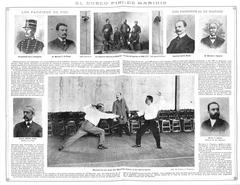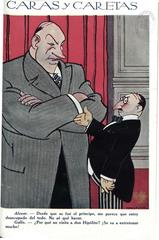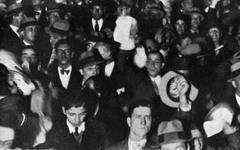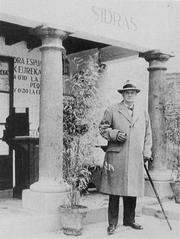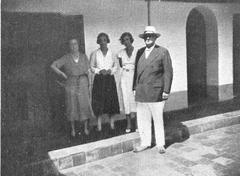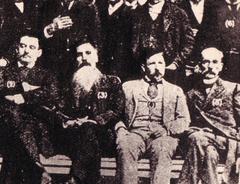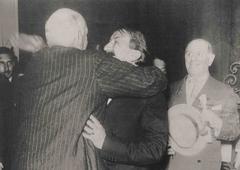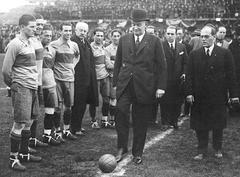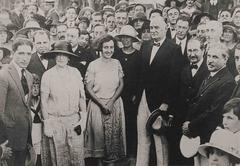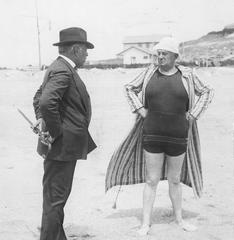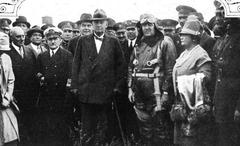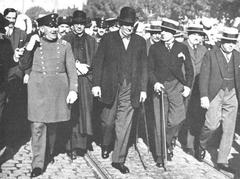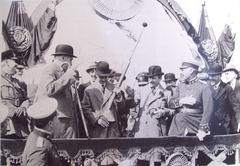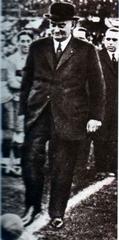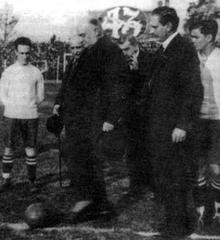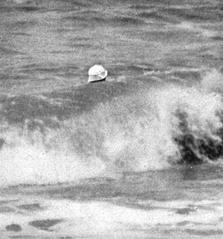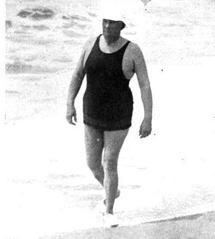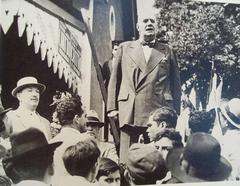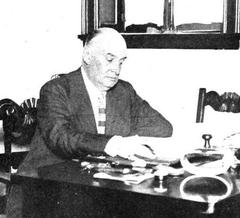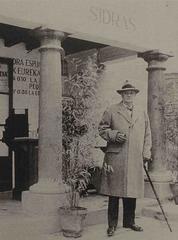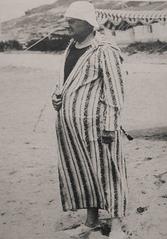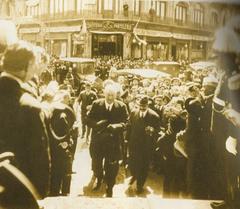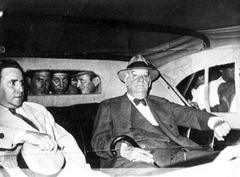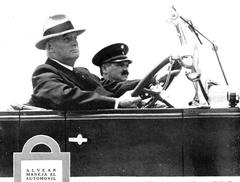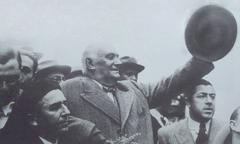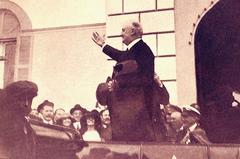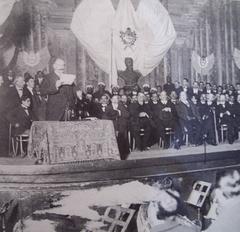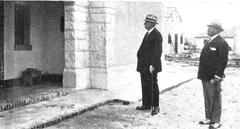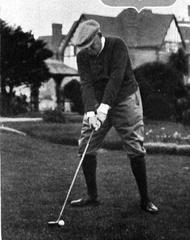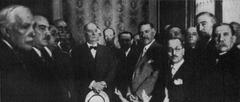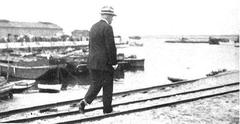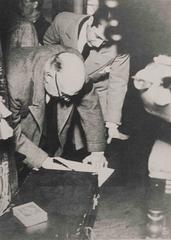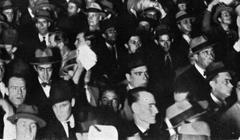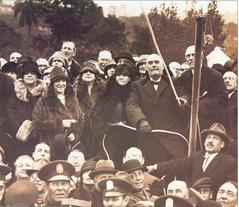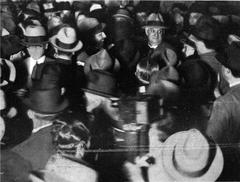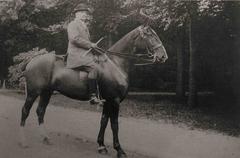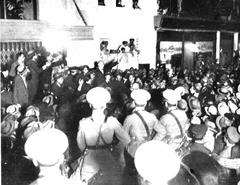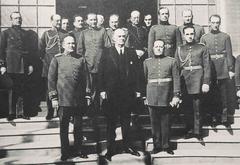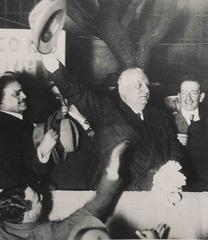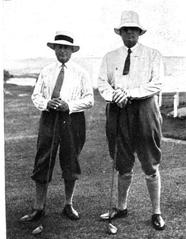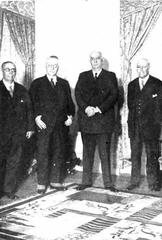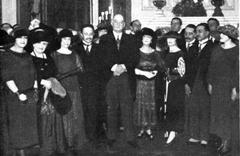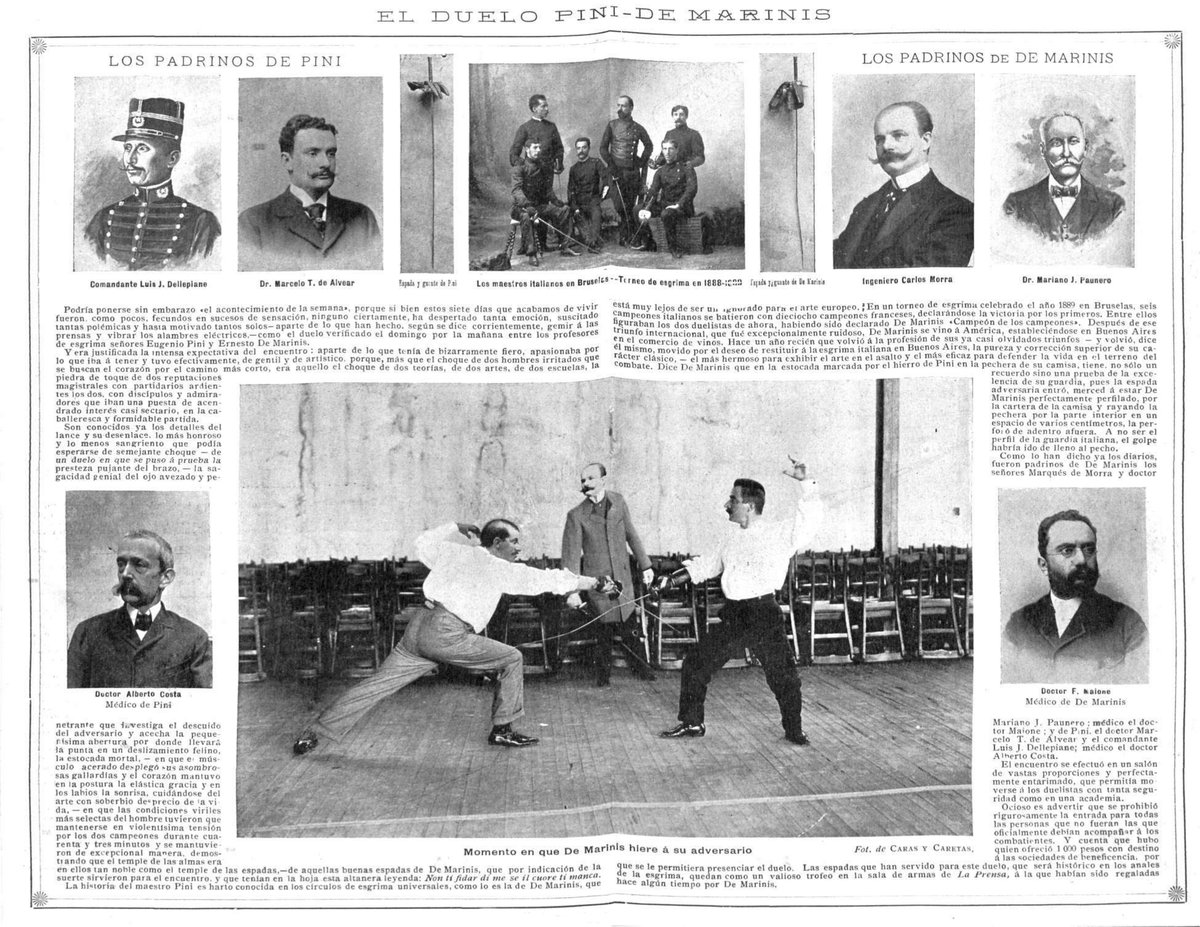
Marcelo Torcuato De Alvear Buenos Aires, Argentina: Visiting Hours, Tickets, and Historical Sites Guide
Date: 14/06/2025
Introduction to Marcelo Torcuato De Alvear and His Legacy in Buenos Aires
Buenos Aires, the capital of Argentina, is renowned for its architectural splendor and deep-rooted history, much of which is shaped by the influential Alvear family. Central to this legacy is Avenida Marcelo Torcuato de Alvear, an elegant boulevard named after the Argentine president who served from 1922 to 1928. The Alvear family’s contributions—spanning governance, urban modernization, and cultural patronage—are visible in the city’s grand avenues, historical monuments, and thriving cultural institutions (Selectus Wines; Perfil).
Walking along Avenida Alvear unveils a tapestry of Belle Époque mansions, luxury hotels such as the Alvear Palace and Four Seasons, and iconic cultural sites including the Recoleta Cemetery—home to the Alvear family mausoleum, a stunning example of funerary art (Buenos Aires Free Walks; Recoleta Cemetery Official Site). This guide offers comprehensive details on visiting hours, tickets, accessibility, transportation, guided tours, and the historical context of these landmarks. Whether you are a history buff, architecture enthusiast, or cultural explorer, the Alvear legacy promises an immersive journey through Buenos Aires’ golden age (directionallychallengedtraveler.com; The Broke Backpacker).
Table of Contents
- The Alvear Family: Origins and Key Figures
- Exploring Avenida Alvear: Architecture and Notable Buildings
- Recoleta Cemetery: Mausoleums and Artistry
- Visiting Hours, Tickets, and Accessibility
- Transportation and Getting Around
- Guided Tours and Suggested Itineraries
- Frequently Asked Questions (FAQ)
- Conclusion
- References and Further Reading
The Alvear Family: Origins and Key Figures
The Alvear family’s prominence in Argentina traces back to Spanish nobility and the colonial era. Their story begins with Juan Bautista G. de Alvear y Garnica, a treasury official from Spain, whose descendants became central figures in Argentina’s independence and modernization (Selectus Wines; Venere.it).
Influential Members
- Carlos María de Alvear (1789–1852): Key leader during the independence movement and first ambassador to the United States (Wikipedia).
- Torcuato de Alvear (1822–1890): Buenos Aires’ first mayor, responsible for major urban reforms (Perfil).
- Marcelo Torcuato de Alvear (1868–1942): President of Argentina, diplomat, and key figure in the country’s modernization (Ecured; Perfil).
Exploring Avenida Alvear: Architecture and Notable Buildings
Avenida Alvear, stretching through the upscale Recoleta neighborhood, was envisioned by Torcuato de Alvear in 1885 as a Parisian-style boulevard. It is celebrated for its concentration of French-inspired mansions, embassies, and luxury hotels (turismo.buenosaires.gob.ar).
Notable Landmarks
- Palacio Pereda: Home of the Brazilian ambassador, exemplifying Beaux-Arts architecture.
- Palacio Ortiz Basualdo: French embassy, featuring neoclassical design.
- Palacio Álzaga Unzué (Four Seasons Hotel): A symbol of early 20th-century aristocratic opulence.
- Palacio Duhau (Park Hyatt): Merges French elegance with local elements.
- Alvear Palace Hotel: Opened in 1932, renowned for luxury and grandeur (dicasargentina.com).
These buildings, adorned with imported marble, stained glass, and wrought iron, give the avenue its distinctive Parisian character (dicasargentina.com).
Recoleta Cemetery: Mausoleums and Artistry
Established in 1822, Recoleta Cemetery is one of Latin America’s most prestigious burial grounds, known for its architectural diversity and the resting places of Argentina’s elite (directionallychallengedtraveler.com).
Architectural Features
Mausoleums here range from neo-classical and neo-gothic to Art Nouveau and Baroque, often constructed with imported materials. The neoclassical entrance sets a grand tone, and the cemetery is often described as an open-air museum (expatpathways.com).
Notable Tombs
- Eva Perón (Evita): A site of national pilgrimage.
- Marcelo Torcuato de Alvear: Mausoleum by Alejandro Christophersen (es.wikipedia.org).
- Carlos María de Alvear: Family patriarch and independence leader.
Each tomb reflects personal histories and Argentina’s broader legacy (josiewanders.com).
Visiting Hours, Tickets, and Accessibility
Avenida Alvear
- Open: 24/7, public street
- Admission: Free; some buildings (e.g., hotels, embassies) may have restricted access
Recoleta Cemetery
- Hours: Daily, 7 AM – 6 PM (check for seasonal changes)
- Admission: Free to enter; guided tours may require fees, typically USD 10–20 (Recoleta Cemetery Official Site)
- Accessibility: Wheelchair-accessible paths available, but some mausoleums have steps
Museo Nacional de Bellas Artes (Nearby)
- Hours: Tuesday–Sunday, 11 AM–7 PM; closed Mondays
- Admission: Free
Transportation and Getting Around
Marcelo Torcuato De Alvear Avenue and surrounding sites are easily accessible via Buenos Aires’ comprehensive transport systems:
- Subte (Subway): Closest stations—General San Martín (Line C), Tribunales (Line D), and Carlos Pellegrini (Line B). Subte operates ~5:30 AM–11:30 PM (Moovit).
- Colectivo (Bus): Multiple lines serve the area; use a SUBE card for payment.
- Train: Retiro station nearby for regional connections.
- Taxis & Rideshares: Easily available via apps like BA Taxi, Uber, and Cabify.
- Walking & Cycling: The avenue is pedestrian-friendly; Ecobici bike stations available (Buenos Aires Free Walks).
Guided Tours and Suggested Itineraries
Walking Tours
- Free Walking Tours: Cover Alvear Avenue and Recoleta, typically 2–3 hours; tips appreciated (Buenos Aires Free Walks).
- Self-Guided: Use GPSmyCity for maps and commentary.
Thematic Tours
- Architecture & History: Explore Belle Époque landmarks and Alvear family history.
- Art & Culture: Include Museo Nacional de Bellas Artes and nearby galleries (The Broke Backpacker).
Suggested Itineraries
- Half-Day: Walk Avenida Alvear, visit Alvear Palace Hotel, and explore Recoleta Cemetery.
- Full Day: Add Museo Nacional de Bellas Artes and Teatro Colón.
- Extended Stay: Explore Palermo, San Telmo, and attend a cultural event or football match.
Frequently Asked Questions (FAQ)
Q: What are the Recoleta Cemetery visiting hours and entry fees?
A: 7 AM–6 PM daily; free entry. Guided tours may require a fee.
Q: How do I get to Marcelo Torcuato De Alvear?
A: By Subte (Lines B, C, D), bus, taxi, or walking from Retiro station.
Q: Are guided tours available?
A: Yes, both free and paid walking tours are offered for the avenue and cemetery.
Q: Is the area safe for tourists?
A: Recoleta and Retiro are generally safe, especially by day; standard precautions apply at night.
Q: Are the sites accessible for visitors with mobility issues?
A: Main avenues and public spaces are accessible; some historic buildings and cemetery areas may have limitations.
Conclusion
Marcelo Torcuato De Alvear Avenue and its surrounding sites encapsulate Buenos Aires’ aristocratic heritage, political history, and vibrant cultural scene. From the grandeur of French-inspired mansions to the solemn artistry of Recoleta Cemetery, each landmark offers a window into Argentina’s golden era. With practical visitor information, accessible transportation, and enriching guided tours, exploring the Alvear legacy is both seamless and rewarding. Enhance your trip by downloading the Audiala app for audio tours and up-to-date guides.
References and Further Reading
- Selectus Wines
- Perfil
- Turismo Buenos Aires
- Recoleta Cemetery Official Site
- Buenos Aires Free Walks
- Directionally Challenged Traveler
- The Broke Backpacker
- Casa Rosada Official Website
- Moovit App
- Tourism Review Argentina
- Audiala App
